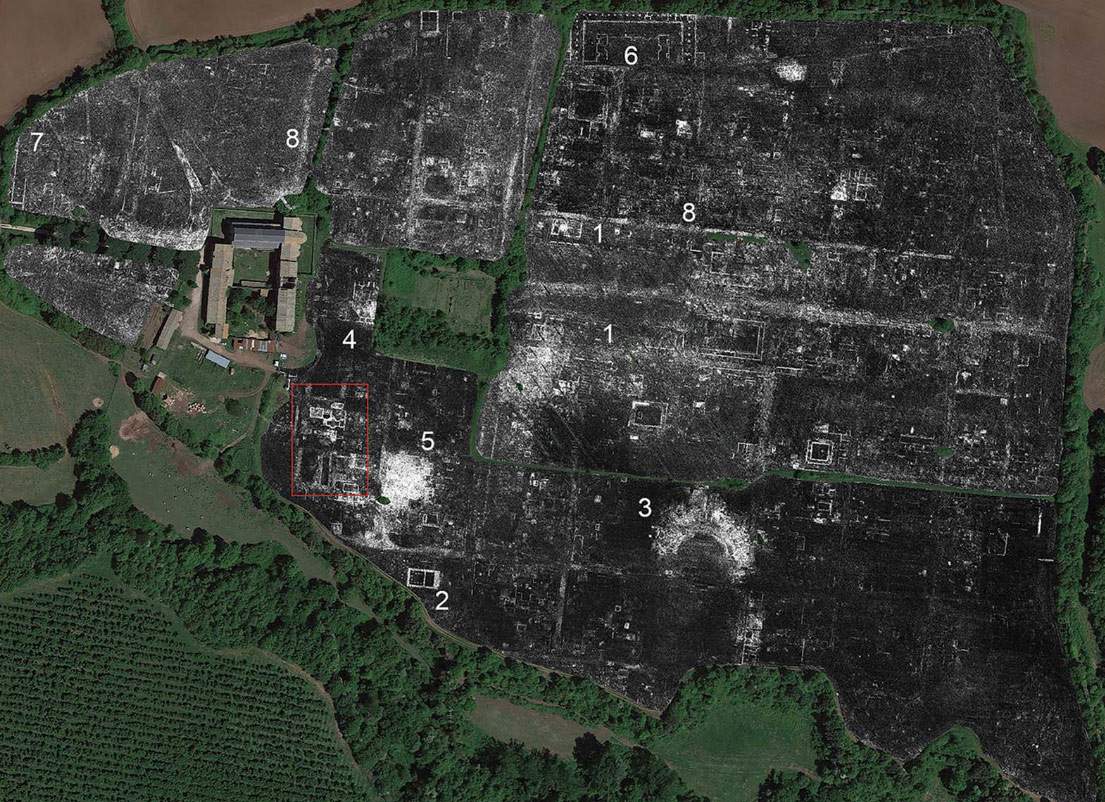Archaeologists reconstruct ancient Roman city in Latium with radar: method will revolutionize studies of urban sites
A team of archaeologists from theUniversity of Cambridge andGhent University (Lieven Verdonck, Alessandro Launaro, Frank Vermeulen, and Martin Millett) has succeeded in studying an ancient city Roman city, Falerii Novi (located near today’s Civita Castellana, in the province of Viterbo), without performing any excavation, but using only ground-penetrating radar(GPR) technology, which is capable of providing high-resolution 3-D reconstructions of structures buried underground. GPR is based on the reactions of electromagnetic waves with respect to the different materials they encounter when emitted: the amplitude and duration of the waves are measured and reduced graphically in the form of “radargrams” from which a mapping of the area under analysis can be recreated.
This method, the authors write in research published in volume number 94 (June 2020) of the University of Cambridge journal Antiquity, has the potential to revolutionize archaeological studies of urban sites, in part because our knowledge of Roman urbanism derives from only a few widely studied sites (such as Pompeii and Ostia, which, however, the archaeologists write, “can hardly be considered typical cities”), while we know little about what the subsurface might reveal. Thanks to GPR technology, therefore, it will be possible to have a broader understanding of how the Romans built their cities, because scholars will be able to map ancient cities at a level of detail never previously achieved.
The study with GPR has enabled archaeologists in Cambridge and Ghent to identify many structural elements by arriving at an analysis of the details of the architecture that previously could only be obtained by excavation. In addition, thanks to GPR, public buildings whose existence was previously unknown have been identified: for example, a temple, a macellum, and even a bath complex. “Although these buildings fall within the known repertoire of a Roman city,” the scholars write, “some are architecturally sophisticated, more elaborate than would be expected in a small city.” Unexpected structures include a porticus duplex (i.e., a colonnaded portico) located along a street: it was probably a public monument. Of others that were already known (such as the theater), however, it was possible to derive information about the details of the structure.
Studies on Falerii Novi, archaeologists point out, are still at an early stage, but at least two conclusions can already be drawn. The first: “the high resolution of the data and the ability to distinguish features at different depths,” the archaeologists write, “provides a much stronger basis for understanding the city than before.” The second: “comparing the GPR results with those resulting from previous magnetometer analyses” (conducted in 2000 and 2010), “shows that neither method can produce a complete archaeological image: for example, the tabernae of the forum appear from the magnetic data but not from the GPR examination.” This last point underscores, according to the archaeologists, the need to use complementary methods and to integrate the results, partly because, they also write in the conclusions, not all sites lend themselves to analysis with GPR, which gives different results depending on the conductivity of the soil. For the future, the scholars conclude, it will therefore be necessary to understand how best to combine the potential of the different technologies at our disposal to reach unprecedented levels of knowledge.
Pictured: reconstruction of the city using GPR. Point 1 is the tabernae of the forum, 2 is the temple, 3 is the theater, 4 is the macellum, 5 is the bath complex, 6 is the porticus duplex, 7 is the capitolium, and 8 is an area with insulae.
 |
| Archaeologists reconstruct ancient Roman city in Latium with radar: method will revolutionize studies of urban sites |
Warning: the translation into English of the original Italian article was created using automatic tools. We undertake to review all articles, but we do not guarantee the total absence of inaccuracies in the translation due to the program. You can find the original by clicking on the ITA button. If you find any mistake,please contact us.




























